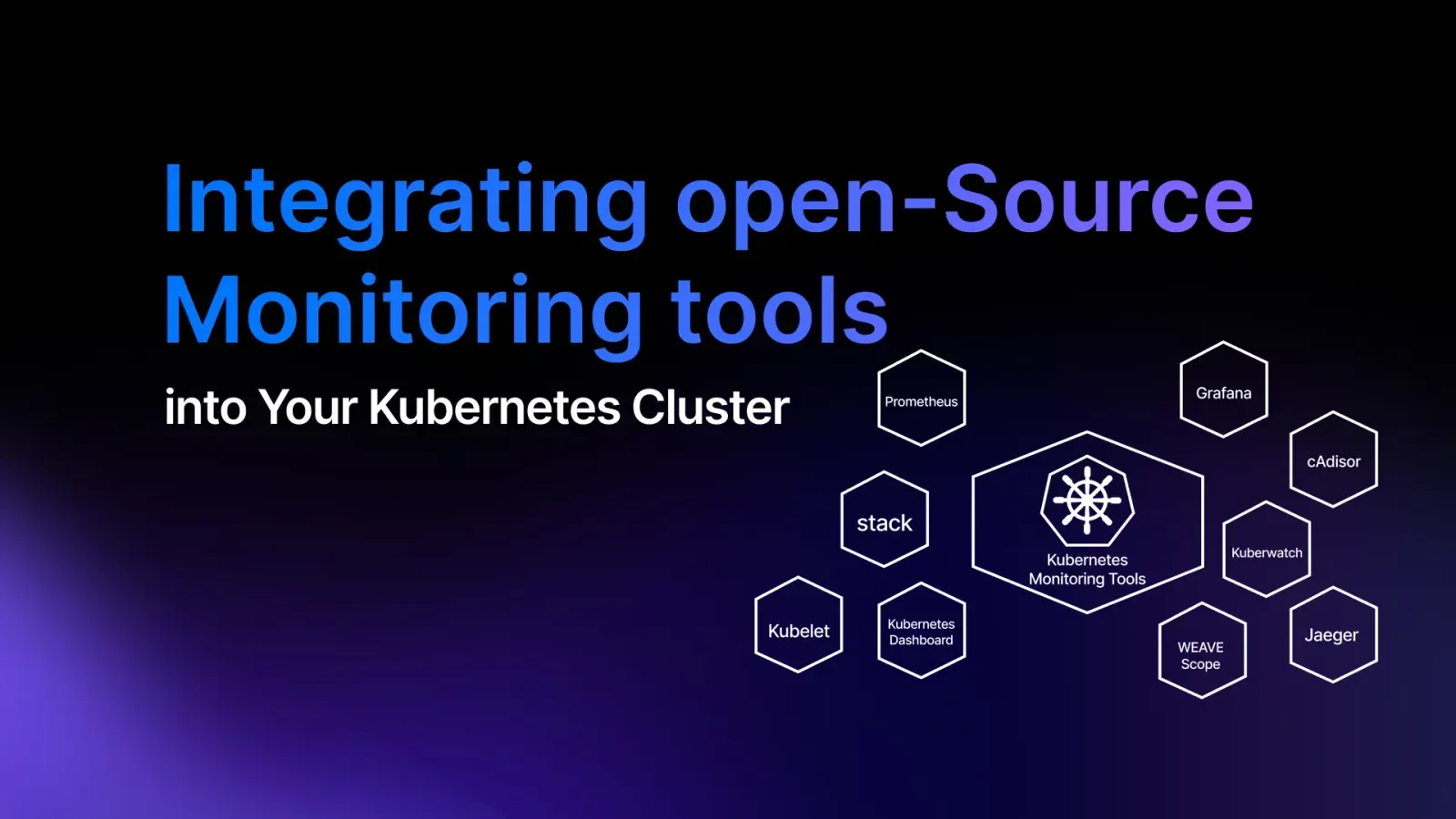Introduction
As Kubernetes continues to dominate the container orchestration landscape, observability has become essential for maintaining healthy, high-performing clusters. Open-source monitoring tools like Prometheus, Grafana, Loki, and Fluentd give DevOps teams the flexibility to monitor metrics, logs, and alerts all while avoiding vendor lock-in.
In this guide, we’ll explore how to integrate these tools into your Kubernetes environment, create a centralized observability stack, and apply best practices for scalable, secure, and efficient monitoring. Whether you’re managing production workloads or just starting your observability journey, this blueprint will help you track, visualize, and optimize your Kubernetes ecosystem end-to-end.
Why Kubernetes Monitoring Matters
Kubernetes simplifies the deployment and scaling of applications, but monitoring its distributed architecture is challenging. Without proper observability, troubleshooting issues, optimizing performance, and ensuring uptime can become complex.
Effective Kubernetes monitoring helps with:
- Real-time Performance Tracking: Observing CPU, memory, and network usage across pods, nodes, and clusters.
- Proactive Alerting: Detecting anomalies before they cause downtime.
- Log Aggregation and Analysis: Centralizing logs for better debugging and auditing.
- Security Compliance: Identifying potential vulnerabilities and unauthorized access.
Top Open-Source Monitoring Tools for Kubernetes
Several open-source monitoring tools can be integrated into Kubernetes to provide comprehensive observability. The most commonly used ones include:
1. Prometheus – Metrics Collection & Monitoring
Why Use It?
- Highly scalable and designed for cloud-native applications.
- Supports multi-dimensional data collection using labels.
- Provides powerful querying with PromQL.
- Native integration with Kubernetes via the Prometheus Operator.
How to Deploy Prometheus on Kubernetes
kubectl apply - https://raw.githubusercontent.com/prometheus-operator/prometheus-operator/main/bundle.yaml
- Configure ServiceMonitors to scrape metrics from Kubernetes services.
- Use Grafana for visualizing Prometheus metrics.
2. Grafana – Visualization & Dashboards
Why Use It?
- Integrates seamlessly with Prometheus, Loki, Elasticsearch, and more.
- Supports custom dashboards with real-time data visualization.
- Provides alerting capabilities with integrations like Slack and PagerDuty.
How to Deploy Grafana on Kubernetes
- Access Grafana UI and configure data sources (e.g., Prometheus).
- Import pre-built Kubernetes dashboards from Grafana Labs.
3. Loki – Log Aggregation
Why Use It?
- Efficient log storage with label-based indexing.
- Native support for Kubernetes pod logs.
- Works with Grafana for unified observability.
How to Deploy Loki on Kubernetes
- Configure Promtail or Fluentd to ship logs to Loki.
- Query logs using LogQL in Grafana.
4. Fluentd – Log Forwarding & Processing
Why Use It?
- Flexible log routing to multiple backends (Elasticsearch, Loki, Splunk).
- Lightweight and highly configurable.
- Works with Kubernetes DaemonSet for automatic log collection.
How to Deploy Fluentd on Kubernetes
- Configure Fluentd to collect pod logs and send them to Loki or Elasticsearch.
5. Kube-state-metrics – Cluster Health Monitoring
Why Use It?
- Provides detailed insights into cluster objects (Pods, Nodes, Deployments, StatefulSets).
- Extends Prometheus by exposing Kubernetes-specific metrics.
How to Deploy Kube-state-metrics on Kubernetes

- Enable monitoring of pod restarts, pending pods, and node health.
Building a Centralized Kubernetes Monitoring Stack
To build a fully integrated monitoring stack, follow these steps:
Step 1: Deploy Prometheus for Metrics Collection
- Install Prometheus Operator.
- Configure ServiceMonitor resources to collect Kubernetes API metrics.
Step 2: Deploy Grafana for Visualization
- Connect Grafana to Prometheus.
- Import pre-configured Kubernetes dashboards.
Step 3: Deploy Loki for Centralized Logging
- Use Promtail or Fluentd to forward logs.
- Visualize logs using Grafana’s Loki integration.
Step 4: Implement Alerting Mechanisms
- Use Prometheus Alertmanager to define alerting rules.
- Set up notifications to Slack, PagerDuty, or email.
Step 5: Optimize for Scalability and Performance
- Use Thanos for long-term Prometheus metric storage.
- Enable Horizontal Pod Autoscaling for monitoring components.
- Secure monitoring endpoints using RBAC and TLS encryption.
Best Practices for Kubernetes Monitoring
- Use Labels and Annotations: Ensure metrics and logs are well-structured with proper labels.
- Limit Data Retention: Optimize storage by defining retention policies for logs and metrics.
- Automate Dashboards: Use Infrastructure-as-Code (IaC) tools like Terraform for monitoring setup.
- Monitor Application Performance: Track request latency, error rates, and resource consumption.
- Enable Security Auditing: Use Falco or OpenPolicyAgent (OPA) for security monitoring.
Conclusion
Monitoring is the cornerstone of a reliable Kubernetes ecosystem. By integrating open-source tools such as Prometheus, Grafana, Loki, Fluentd, and kube-state-metrics, you can achieve deep visibility into application performance, cluster health, and system reliability — all while keeping costs under control.
These tools not only enhance observability but also empower DevOps teams to proactively detect issues, optimize workloads, and maintain high availability. When implemented effectively, open-source monitoring transforms Kubernetes from a complex orchestration system into a transparent, measurable, and highly resilient infrastructure.
Looking to automate or scale your monitoring stack?
Leverage Atmosly’s DevOps automation platform to integrate observability, CI/CD, and cloud-native workflows effortlessly across Kubernetes environments.


.png)
.png)

.png)
